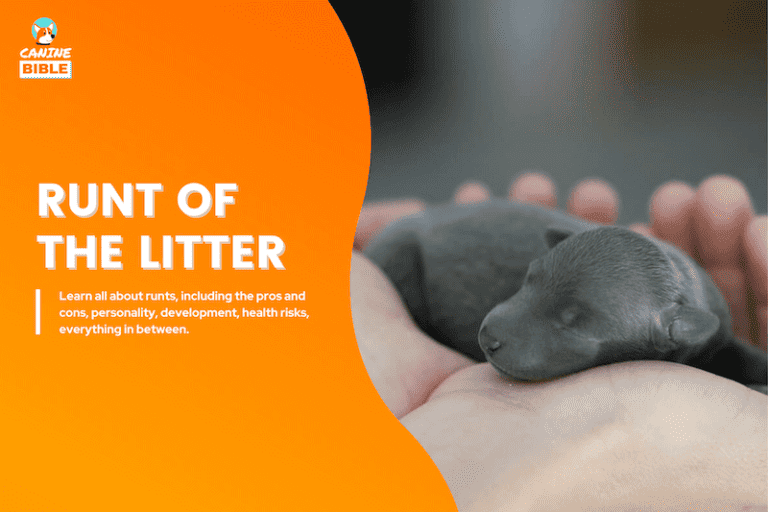Blue English Bulldog Breed Info: Health, Price, Traits & More
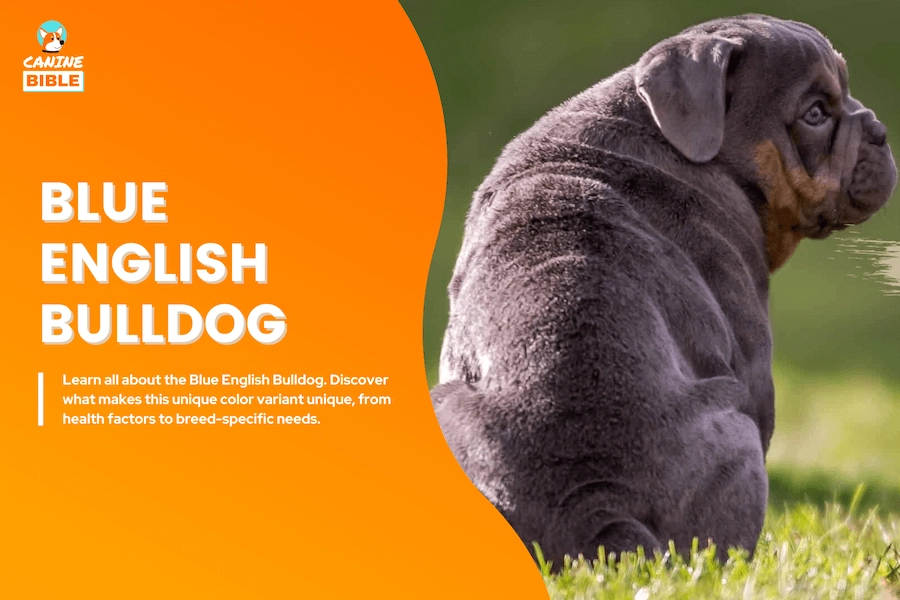
Canine Bible is reader-supported. We receive affiliate commissions via some of our links. This doesn’t affect rankings. Learn more.
This is the most comprehensive and detailed guide to learning all about the Blue English Bulldog. But why is this breed called “Blue” English Bulldog in the first place? How are they different from traditional English Bulldogs? Are they more prone to health issues? From their history to their diet, health, personality, price, and everything in between, this guide covers everything you need to know if you’re considering buying a Blue English Bulldog. Let’s get started!
History & Breed Origin
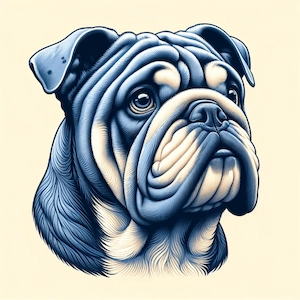
Blue English Bulldogs were initially bred in
1835s
The history and breed origin of the Blue English Bulldog are intertwined with that of the standard English Bulldog, a breed with a rich and storied past that dates back several centuries in England. The distinctive blue coat color of the Blue English Bulldog is a relatively recent development and variation within the breed, emerging from specific genetic traits.
Bulldogs were first bred in early 13th-century England. They were named for the “sport” of bullbaiting, in which a bull was tied to a stake to fight a pack of Bulldogs who would fight the bull while spectators bet on who would win. The extinct Old English Bulldog was specially bred for this sport. When blood sports were outlawed in 1835, bullbaiting began to die out. In response, Bulldog admirers and breeders started the long process of transforming the breed from brawler to companion, says the AKC. Today, the English Bulldog makes a good family pet. The AKC recognizes the breed simply as the Bulldog.
The blue coat color in English Bulldogs results from black-coated English Bulldogs whose coat color has been diluted through generations of breeding. This occurred due to a dilution gene affecting the black pigment in their fur, resulting in the unique blue-gray shade in Blue English Bulldogs. This color variation is due to a recessive gene, meaning both parents must carry this gene for their offspring to exhibit the blue coat.
The Blue English Bulldog shares its lineage and characteristics with the standard English Bulldog; however, the blue coat color is not recognized by all kennel clubs and breed standards, including the American Kennel Club (AKC).
AKC Breed Category
The English Bulldog, including all color variations like the blue English Bulldog, falls under the Non-Sporting Group.
Breed Overview
12 – 16 inches (Male)
12 – 16 inches (Female)
50 – 55 pounds (Male)
40 – 45 pounds (Female)
8 to 10 years
Grey or black
Great family dog with the right
training and environment
Gentle, affectionate, playful, loyal
and protective nature
Traits & Characteristics
Appearance
Blue English Bulldogs have a robust and compact physical appearance, with a well-defined musculature. Despite their medium size, they possess a significant presence, thanks to their broad shoulders, sturdy legs, and pronounced chest. Their tail can be either straight or screwed, but it is always short, complementing their rounded body.
The "blue" in their name doesn't refer to a pure blue but a cool-toned, grayish shade resulting from diluting the black coat gene known as the merle gene (M-locus). This dilution gives their short, smooth fur a unique appearance comparable to navy or sky blue. In dogs, the term "blue" is used as a general coat descriptor for a silvery-grey color, often having a distinctly icy sheen, often with a lustrous sheen in sunlight. The coat itself is fine and glossy and lies flat against the body, highlighting the muscular contours of the breed. These dogs are not entirely blue but have fawn or white undercoats. The shade of blue may vary slightly from dog to dog. Two other prominent attributes in Blue English Bulldogs are blue noses and blue eyes.
Blue English Bulldogs retain the breed's iconic facial characteristics, including wide-set eyes, flat noses, and deep wrinkles. Their eyes, often bright and expressive, can appear even more striking against their blue-gray coat. The wrinkles and folds, especially around the face and neck, are deep and pronounced. The ears are small and set high on the head, typically described as "rose" ears, folding back to reveal the inner ear. The muzzle is extremely short, giving the face a flattened appearance. The lower jaw protrudes out in front of the upper jaw, exposing the lower incisors, also known as an underbite dog. Their lips are fleshy, and their face is sweet and loving.
While the coat is predominantly blue, some blue English Bulldogs may have unique markings or patterns, such as white patches on the chest and feet or brindle stripes. These variations add to the individuality of each dog, making every blue English Bulldog a one-of-a-kind companion.
Personality & Temperament
Blue English Bulldogs are renowned for their affectionate, loyal nature and gentle and patient temperament, making them excellent companions and family pets. They form deep, emotional bonds with their owners, demonstrating a level of devotion and love that is truly heartwarming. Although they may appear reserved around strangers, they warm up quickly, showcasing their inherent sociability and desire for companionship.
Adaptable to various living situations, from apartments to homes with yards, their laid-back demeanor makes them suited for both active and quiet households. Despite a streak of stubbornness, they are trainable with patience and consistency, benefiting from early socialization and obedience training.
These dogs are not just about quiet affection; they're also alert and have a courageous side, ready to protect their family if necessary. This balance of loyalty, affection, adaptability, and a protective instinct makes Blue English Bulldogs cherished pets that bring love and joy to their human families.
Health
Blue English Bulldogs are generally healthy. However, some can develop genetic health problems due to poor breeding practices.
Recommended Health Tests For Blue English Bulldogs
Blue English Bulldog Food & Nutrition
The nutritional requirements of Blue English Bulldog depend on various factors, including weight, health conditions, size, age, and activity level. A Blue English Bulldog diet should contain the six essential nutrients The Association of American Feed Control Officials (AAFCO) outlined. Given their size range and energetic disposition, a diet suited for mid-sized dogs is typically appropriate for Blue English Bulldogs. On average, most Blue English Bulldogs will require about 1075 calories per day. If you're giving treats to your Blue English Bulldog, adhere to the 10% rule: 968 calories (90%) from food and 108 calories (10%) from treats. For precise calorie calculations, estimate your dog’s weight and use a dog calorie calculator.
Exercise
Blue English Bulldogs have low energy levels and require moderate exercise to maintain their health, avoid behavior problems and muscle tone, and prevent obesity, which can exacerbate common health issues like hip dysplasia and heart problems. A daily 30 minutes of exercise (walking and playtime) is the key. This will also ensure your dog is burned out by nightfall and can sleep soundly. Playing dog sports like frisbee can also be enjoyable for you and your Blue English Bulldog.
Due to their brachycephalic nature, Blue English Bulldogs are highly susceptible to overheating and breathing difficulties. Exercise should be done during cooler parts of the day, and water should always be available. Watch for signs of heat exhaustion, such as heavy panting, drooling, or lethargy.
Blue English Bulldogs also require mental stimulation. Engage them in playtime with toys and puzzles that challenge their intellect, such as Nina Ottosson By Outward Hound or Pet Zone IQ Treat Ball, which provide mental engagement through play.
Training
Successful training of a Blue English Bulldog hinges on starting early, employing positive reinforcement, and maintaining consistency throughout the process. Bulldogs can be stubborn, so patience and a positive, reward-based approach are crucial.
Stanley Coren’s dog intelligence tests found that the Bulldog breed can obey a known command on the first try with a 25% or lower success rate and understand new commands after 80-100 tries, meaning this breed doesn’t catch onto things quickly. This is why consistency is key. Training can be difficult for someone who is not a pack leader, as these dogs can be stubborn. If your Bulldog is resistant, take a step back, reassess your approach, and try again later. Never respond with frustration or anger, as this can harm the bond between you and your dog.
Bulldogs have relatively short attention spans, so keep training sessions brief (5-10 minutes) to maintain their interest and enthusiasm. Short, engaging training sessions will keep them interested, focusing on essential commands like "sit," "stay," and "come" to ensure their safety and good manners. Incorporating play into these sessions makes learning more enjoyable and enhances the effectiveness of the training.
Intelligence
According to canine psychologist Stanley Coren’s dog intelligence trials, the Bulldog breed is not among the brightest dogs. They are ranked the 136th smartest dog (out of 138) for obedience & working intelligence, meaning they can obey a known command on the first try with a 25% or lower success rate and understand new commands after 80 repetitions 100. This puts Bulldogs under the “low intelligence” dog category. If we want to put this into perspective, a German Shepherd or Labrador takes fewer than 5 repetitions to learn a new command. That’s 16 times faster than the Bulldogs. But obedience isn’t everything, as Bulldogs show high adaptive and instinctive intelligence. We wouldn’t label Bulldogs as “dumb dogs.” We would label them slow learners. They can learn as much as your average dog with the proper training.
Breeding
Breeding Blue English Bulldogs responsibly involves a comprehensive understanding of the breed's health requirements and the specific genetics behind their distinctive coat color. The blue coat color is due to a dilution gene mutation, specifically a recessive mutation in the melanophilin (MLPH) gene, known as the d locus. This mutation affects the pigment in the dog's fur, turning what would normally be a black coat into a gray-blue shade and a chocolate brown coat into a pale version, resulting in what is often referred to as blue, charcoal, silver, or Isabella.
To breed Blue English Bulldogs ethically and healthily, breeders must prioritize thorough health screenings to identify and manage common breed health issues, such as hip dysplasia, heart conditions, and respiratory problems, along with potential skin and coat issues like Color Dilution Alopecia, which can be associated with the dilution gene. Breeding two dogs that carry this recessive mutation without passing on adverse health conditions is a key concern.
Breeders should ensure that both females and males come from healthy bloodlines and have undergone thorough health screenings. Breeding Bulldogs, including blue variants, should follow best practices to safeguard the health and welfare of the dogs. These include waiting until the female is two years old and after her second heat cycle. Don’t breed female Blue English Bulldogs in two consecutive heat seasons. She needs the proper time to recover. You should expect a litter size of between three and four puppies.
Grooming & Care
Owning a Blue English Bulldog is more than a privilege; it's a responsibility. Dogs rely on their owners for necessities like food and shelter, but they deserve more than just the basics. If you decide to bring a Blue English Bulldog into your life, it's essential to recognize and embrace the full extent of commitment required for responsible dog ownership.
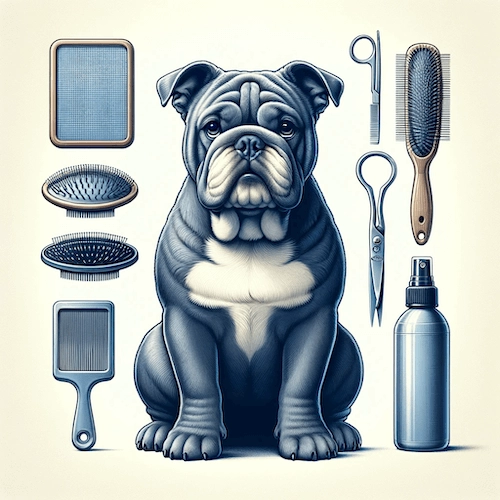
Is The Blue English Bulldog A Good Family Dog?
Blue English Bulldogs are a great option if you’re looking for a new addition to your family. Their patient and gentle demeanor is particularly advantageous in households with children, as Bulldogs are known for their tolerance and protective yet non-aggressive instincts towards children. However, supervision during interactions is always advised to ensure the dog's and children's safety and well-being. They also socialize well with other dogs and pets.
Bulldogs adapt well to most situations, making them great companions for first-time dog parents. They are recognized as loyal pets and tend to form strong bonds with owners. Bulldogs are relatively low-maintenance pups and are happy to spend most of the day on the couch. However, they need proper exercise. Usually, their appearance and courageous nature alone are enough to frighten intruders; they are fine watchdogs. English bulldogs can be wary of unfamiliar dogs and people. Early socialization is needed, as with any dog.
Families should note the breed’s specific health and grooming needs, including the importance of regular veterinary check-ups and maintaining their unique skin folds to prevent infections. Additionally, their sensitivity to heat necessitates a cool, comfortable living environment to avoid overheating.
To better understand if a Blue English Bulldog is the right fit for you, consider watching videos featuring experienced Blue English Bulldog owners. These resources provide insights and share personal experiences with the breed, offering valuable perspectives to help you make an informed decision about welcoming a Blue English Bulldog into your home.
How Much Do Blue English Bulldogs Cost?
The average Blue English Bulldog price ranges between $5,000 and $14,000. The high cost is due to the specialized breeding process, popularity, high demand, and the limited number of puppies available. Prices are higher for Blue English Bulldog puppies with sought-after traits, like blue eyes or unique color patterns.
In addition to the purchase price, the annual cost of caring for a Blue English Bulldog is around $1,500, which is more than many other breeds. Be cautious of unusually cheap offers, often below $1,000, as they may indicate backyard breeders who lack proper breeding knowledge and care. It's best to buy from reputable, recognized breeders.
Where to Buy A Blue English Bulldog?
Finding a reputable Blue English Bulldog breeder can be challenging. A good starting point is local animal shelters or dog rescue organizations. While finding a Blue English Bulldog for free is rare, opportunities can occasionally arise. Exploring options with local breeders in your area is also advisable. For those interested in pre-screened, healthy teacup puppies, Pawrade and PuppySpot are recommended resources that offer puppies from reputable U.S. breeders. It’s crucial to request medical records and certifications for both the parents and the Blue English Bulldog puppy to verify health screenings, ensuring a higher likelihood of your puppy being healthy.
Blue English Bulldogs Coat & Colors Pictures
Here is a visual list of some of the different hues you can expect to see in Blue English Bulldogs.
Blue Tri-Color English Bulldog
Blue Tan English Bulldog
Blue Gray English Bulldog
Blue Heeler English Bulldog Mix
Grey English Bulldog With Blue Eyes
Blue Trindle English Bulldog
Blue English Bulldog Puppies
Here’s a video of a cute Blue Bulldog puppy and a step-by-step guide to getting started with your new furry baby.
Blue English Bulldog Insurance Consideration
Blue English Bulldogs can be predisposed to certain genetic disorders, including hip dysplasia, which can lead to arthritis and other mobility issues. Given these conditions are lifelong, it's crucial when selecting dog insurance for Bulldogs to examine any coverage limits and fully understand the duration for which conditions are covered. This foresight ensures your Blue English Bulldog receives the necessary care throughout its life without unforeseen financial burdens.
FAQ
The Bottom Line
Blue English Bulldogs can make incredible companions, but you need to understand this breed may require more health care needs than most dogs. For instance, if you live in a hot, weathered city, remember Bulldogs are highly vulnerable to heat. They also need extra cleaning care for the skin folds and tail pockets. They may also have trouble breathing, among other conditions. Bulldogs are incredibly loving and rewarding dogs in every aspect, but do your research first and make sure you can care for these precious furry wrinkly dudes through the good, the bad, and the ugly. Bringing a Blue English bulldog home is a commitment for life. And if you think you can give them the best life possible.
Like It? Subscribe & Share!
Sources
Canine Bible uses only high-quality sources, including peer-reviewed studies, to support the facts within our articles. Read our editorial process and product review methodology to learn more about how we fact-check, test products, and keep our content accurate, reliable, and trustworthy.
Canine Bible authorship represents the unified voice of our entire editorial team and our in-house veterinarians rather than a single author. Each article, blog post, and review published under the Canine Bible name undergoes a rigorous review process, involving all team members to guarantee accuracy and up-to-date in accordance with the latest veterinarian research. This collaborative effort is an integral part of our editorial process and aligns with our four pillars of content creation. This approach ensures our content is backed by expert knowledge and factual information, offering our readers reliable, actionable, and trustworthy content.


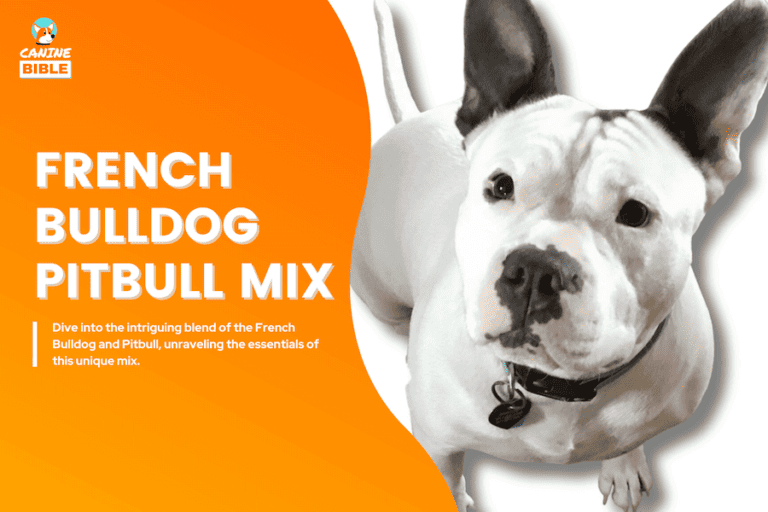

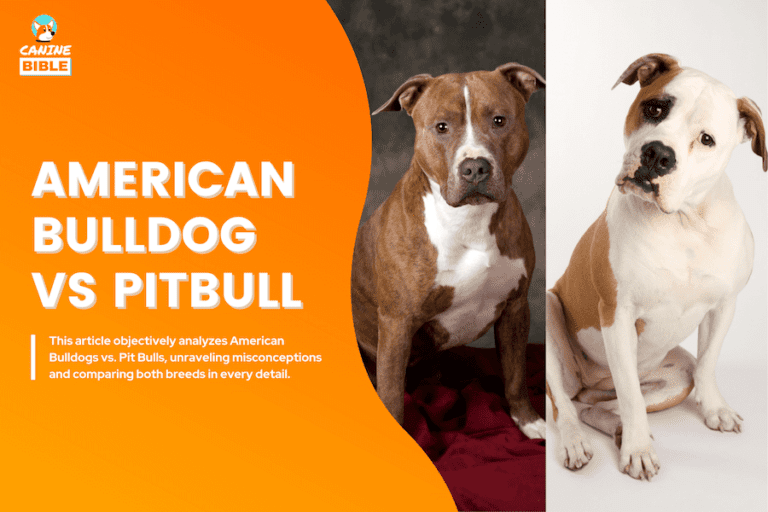
![Pomeranian Husky Mix: Pomsky Breed Guide [Price, Pictures, Personality & More]](https://www.caninebible.com/wp-content/uploads/2022/02/Pomeranian-Husky-Mix-768x512.png)
